Rather unexpectedly, the very first views you get of the gardens at The Museum of the Home are some of the best – as the overground train slowly pulls into Hoxton station, one gets a bird’s eye view, a taster of what’s to come. On a rather rare, sunny and warm Easter weekend I made my way over to East London to meet up with head gardener Heather Stevens for a walk and talk, a guided ramble around the gardens there. Heather has been working at the Museum of the Home (formerly the Geffrye Museum) for nearly 27 years, starting out as a florist, then as a gardener, and now currently and for many years as the head gardener, making a formidable pairing with hard landscaper Sean Carey, along with a small team of volunteers.
The museum itself, ex-almshouses dating back to 1714, exists to show the development of the home and the way in which we have lived in these built environments throughout the centuries. What better a location to also show the history of garden design, dating back to the 1500’s and moving up, approximately a century at a time, culminating with the installation of a green roof designed to represent an aspect of gardening in the 2000’s.
Perhaps you may have heard of the extensive redesign and developments that saw the museum close its doors back in 2018 and then re-emerge in the summer of 2021. During that time the architects (Wright and Wright) re-imagined much of the site, establishing new and innovative ways of reconnecting the house with the gardens. Paths were widened, ground-floor windows were opened for the first time (allowing the gardens to become visible and immersive almost at ground level) along with greater accessibility and a route round the museum and garden that simply flows in a more naturally relaxed way.
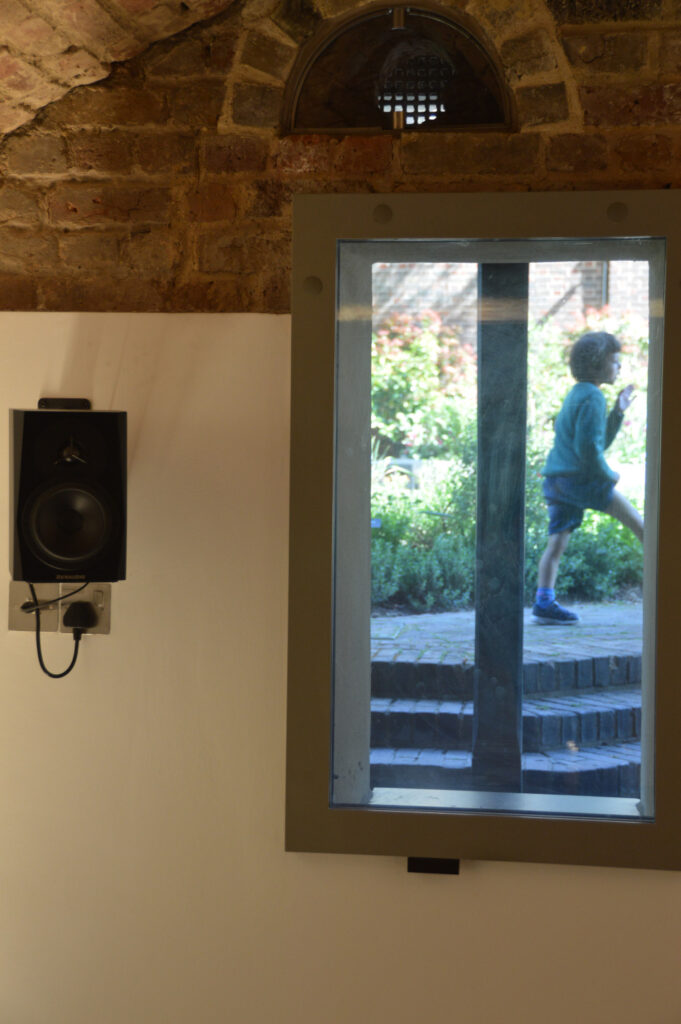
Views of the garden from inside the museum
Even after pushing aside all the perils of a two year pandemic (staff shortages, the stop/start of various lockdown restrictions, trade supply issues etc) Heather still had the huge challenge of digging up the garden, pretty much in its entirety, and to begin the exhausting work of either saving or salvaging the myriad of precious plants. Trees and shrubs were protected in-situ, but as for the rest, a huge amount of work would be required to pot up countless plants, heeling them in elsewhere, or simply taking them home with her and treating them as treasured nursery stock.
Needless to say, Heather and her team worked tirelessly throughout the pandemic, with the museum, and its gardens, re-opening in the summer of 2021. As I say, I was very fortunate and somewhat blessed by great weather on the Saturday I visited the gardens. I was greeted by Heather, such a kindly gardener, generous with her time, who showed me around the various gardens, both of us talking all things horticultural the entire time.
We commenced our journey at what used to be the main entrance of the museum: a huge area of lawn, surrounded by narrow shady borders, all newly-planted and fringed with London Plane trees. In recent years the commercial requirements of the museum have demanded extra care and maintenance of the lawn. Increased footfall from various events, plus the odd marquee, will no doubt call for regular re-turfing of the site and increased irrigation.
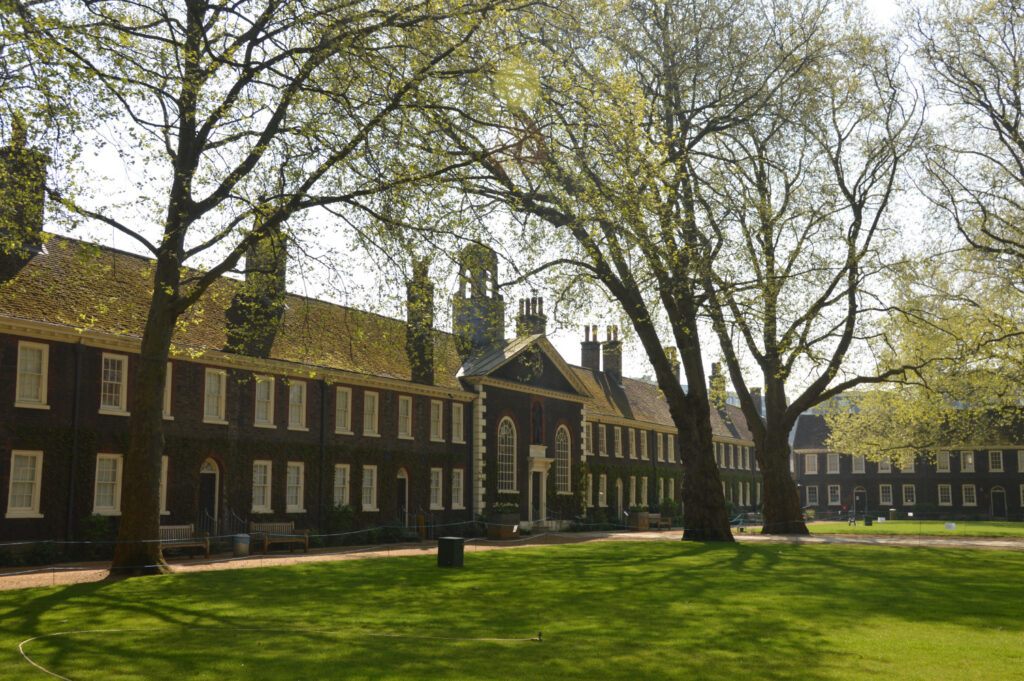

One
sharp turn to the right, through ivy-covered stonework and down a few
steps, we find ourselves in the Ironmongers’ Graveyard garden.
This is where the remains of Sir Robert Geffrye,
and his wife Priscilla lie, as well as the graves and memorials of
others associated with
the
Ironmongers’ company.
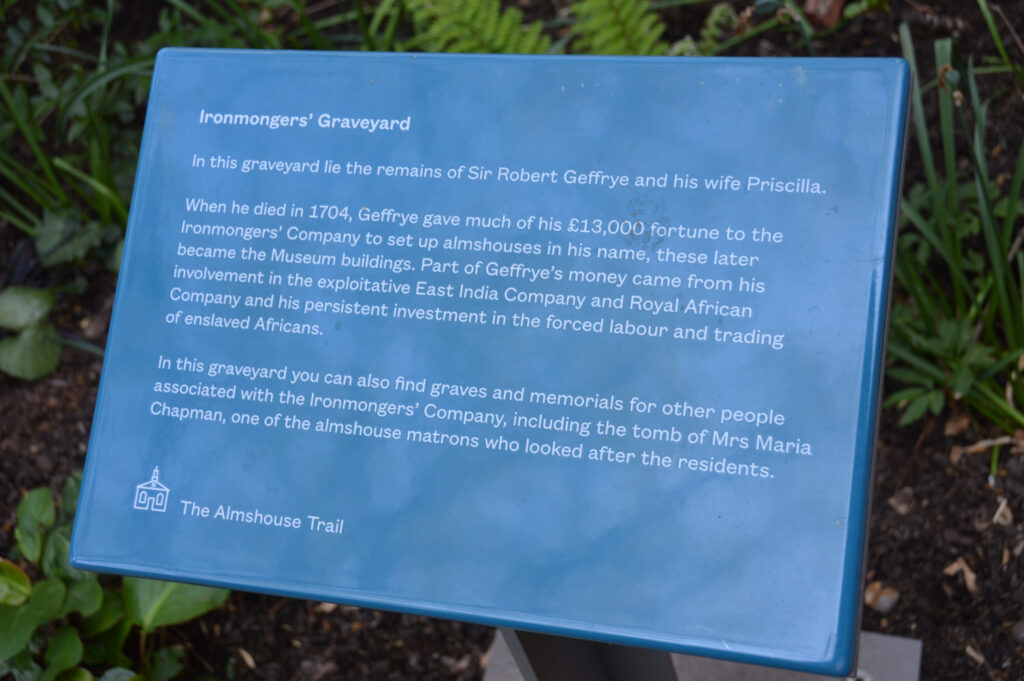
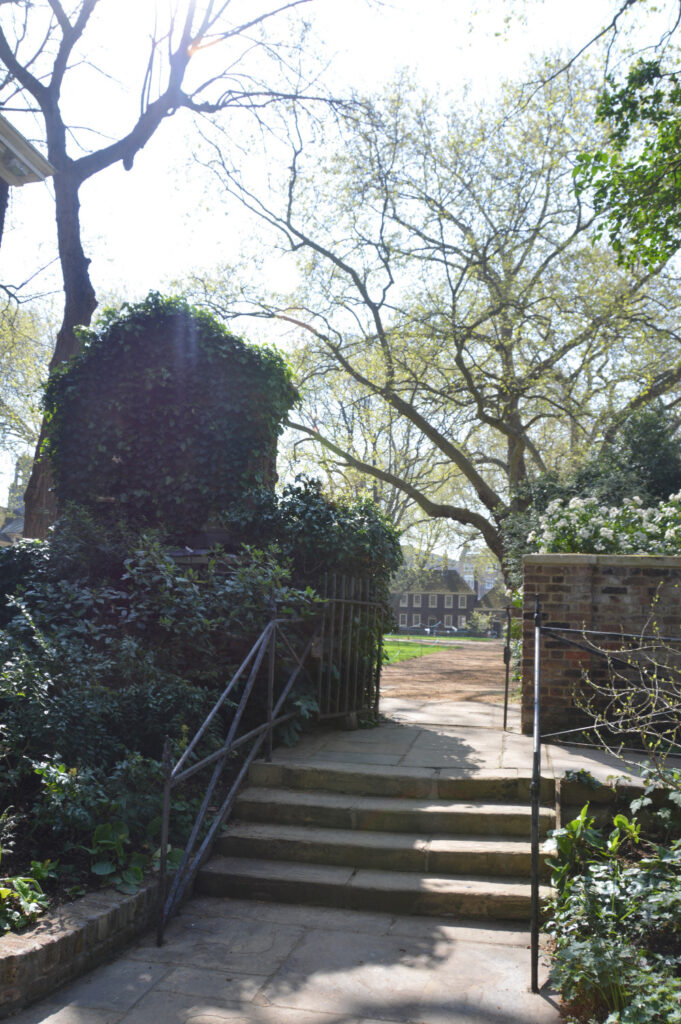
Again Heather’s challenge here was to work solely with shade-loving plants, and what a great job she has done, building up a collection of all the usual suspects, including bergenias, various ferns, hellebores, hardy geraniums and hydrangeas, to name just a few! At this point I asked Heather if, as a gardener, she ever gets fed up working within the limitations of so much shade. ‘Not really’ she said. ‘For sure, it poses certain challenges, but it comes in very handy in the summer months’. Spoken like a true gardener.
Next I was taken through what can only be described as the gardener’s compound. To be honest, this is always the area that interests me the most. I am, after all, a professional gardener myself, and to have access to these out-of-bounds areas always feel like such a treat. Here lies the compost bays, the wheelbarrows, the surplus turf – now upturned to create loam stacks – and the huge bays holding over three years of fallen leaves from all their London Plane trees. One bay (the oldest) held all the leaf fall from the autumns of 2019 and 2020, with the other housing fallen leaves from 2021 and 2022. It was remarkable to see the contrast between these two bays, and to see the huge volume of leaf mould that was created as a result.
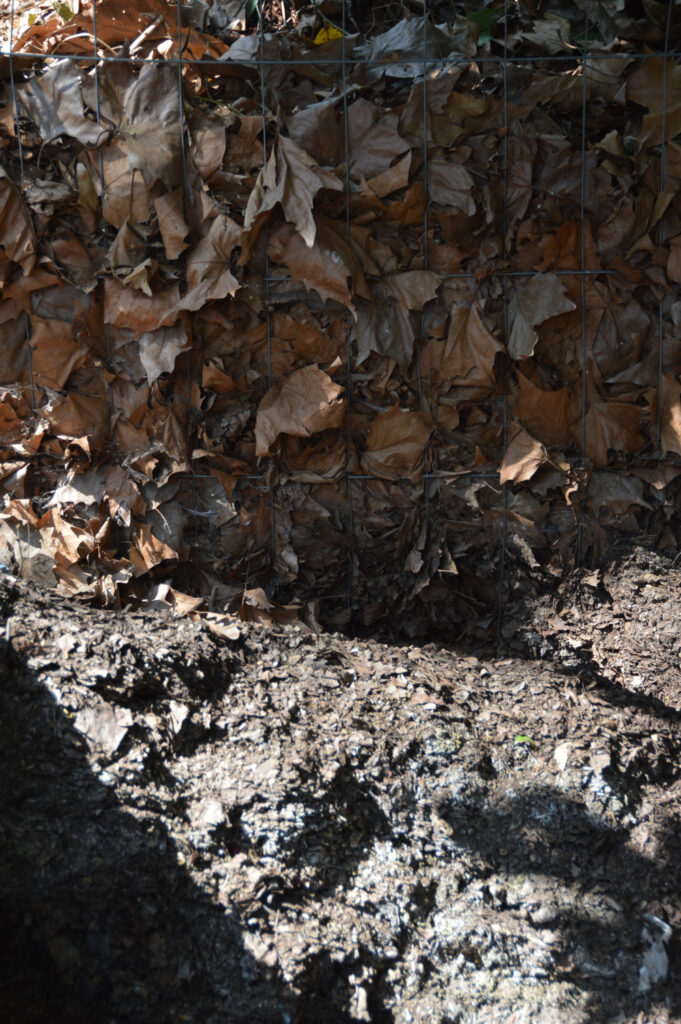
Before moving on to the main event, the display gardens designed to depict gardens throughout time, I was shown the delightful Herb Garden, a walled and wonderfully sunny spot where the paved formality, sectioned into quarters and with a central axis housing an ornamental urn, gave me a real sense of safety and comfort. It’s somewhere you would simply want to sit and rest for a while; maybe take in a few of the plant names, or just watch a lone robin flit, fly and bounce its way around the various features of the garden.
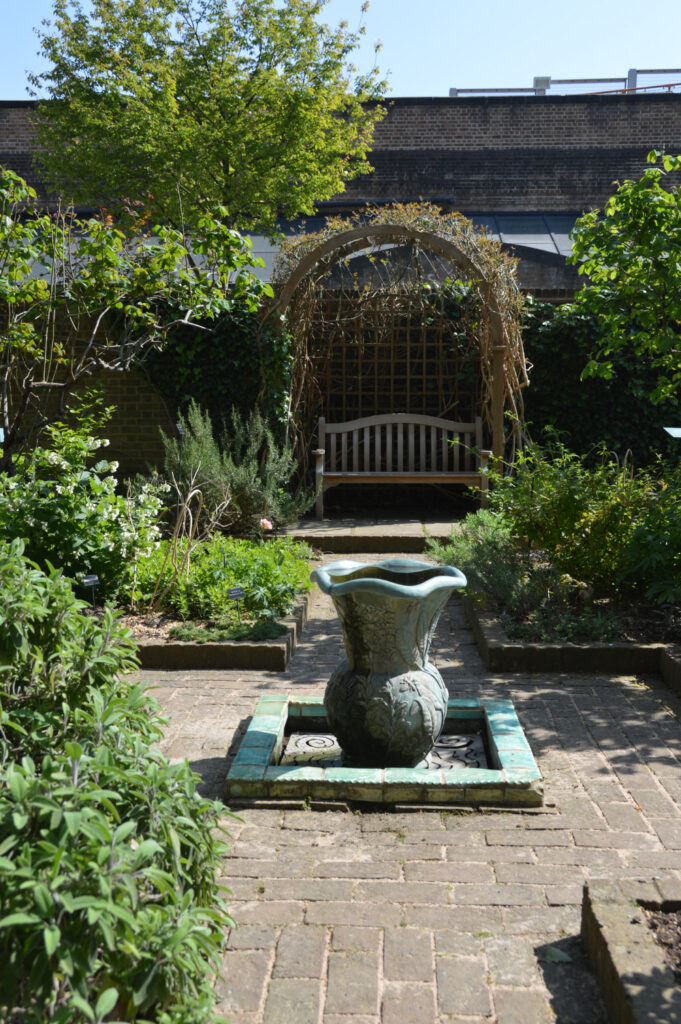 |
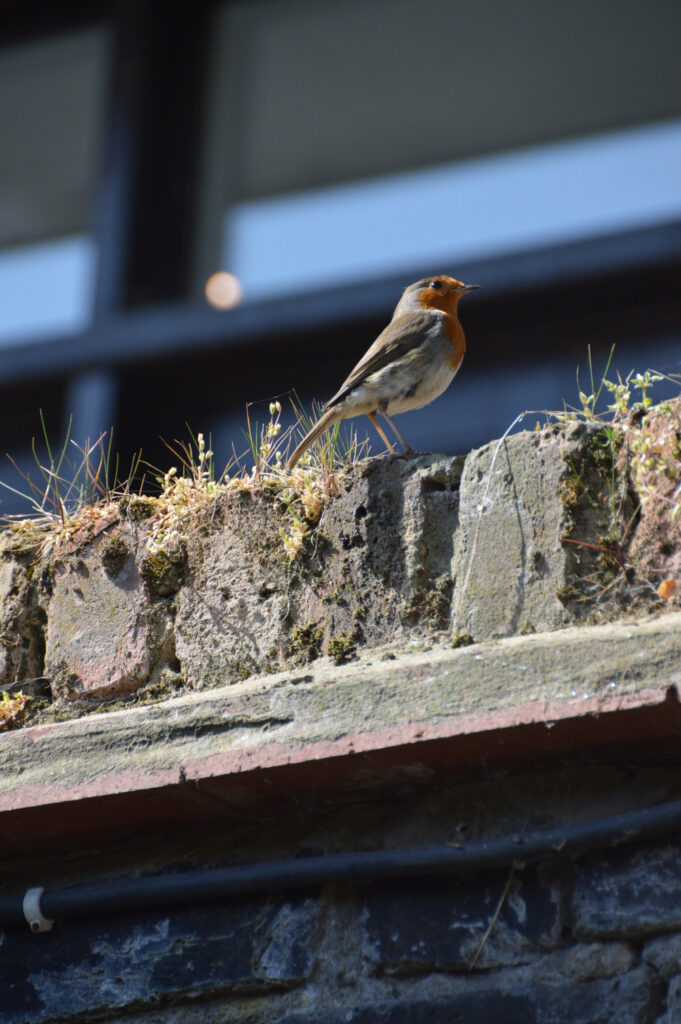 |
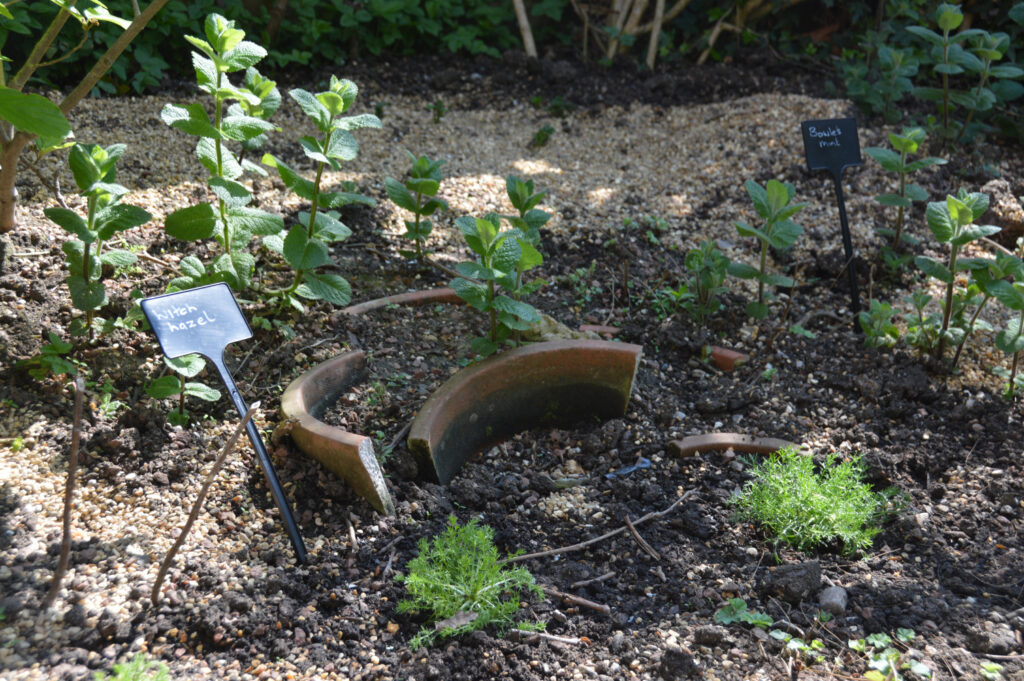
Very soon we entered into the avenue of those historic show gardens, starting first with a charming knot garden designed to represent the formal gardens of the 1500’s. It was lovely to see the interlocking tapestry of Santolina (Cotton Lavender) along with wall germander, Teucrium chamaedrys being used as low-cut hedging. This was followed by the Functional and Practical garden of the 1600’s where an incredible amount of work had resulted in several raised beds, now stuffed full of herbs and veg!
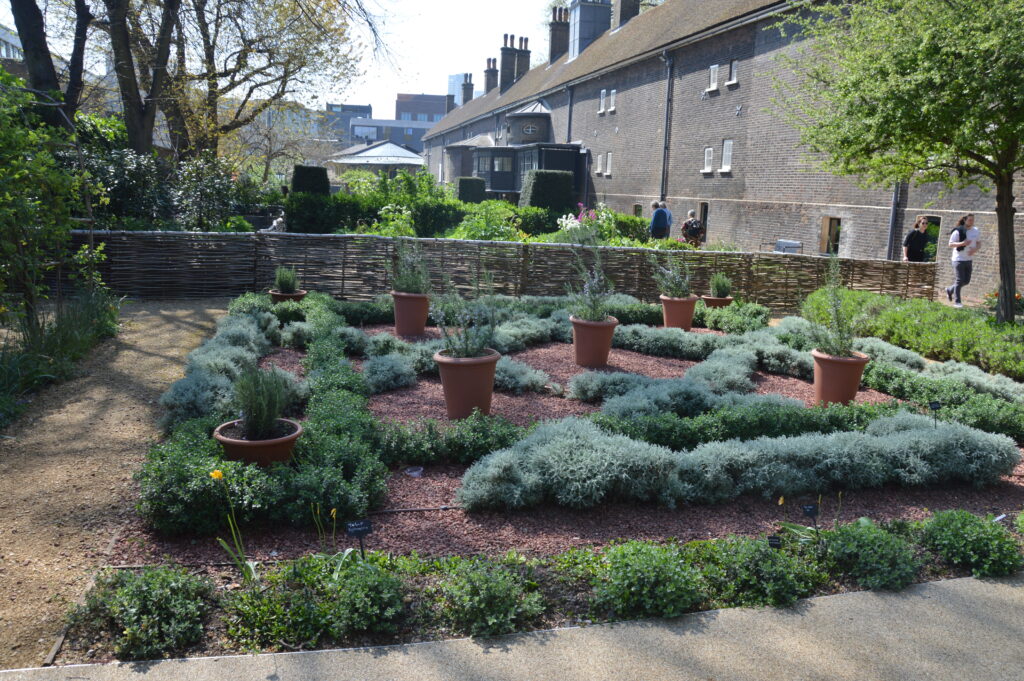 |
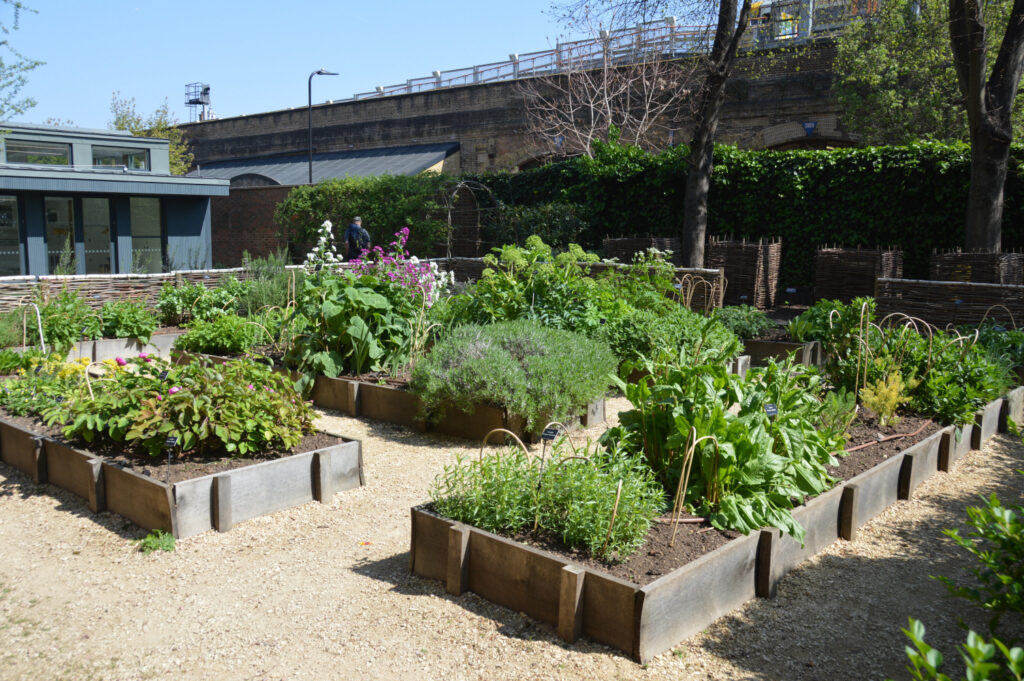 |
Following my visit, pictures kindly sent to me by Heather give some idea of the work involved in creating this particular area. It’s worth remembering that the entire garden demanded an amazing amount of work, in a relatively short space of time, and by a very small, but dedicated, team.
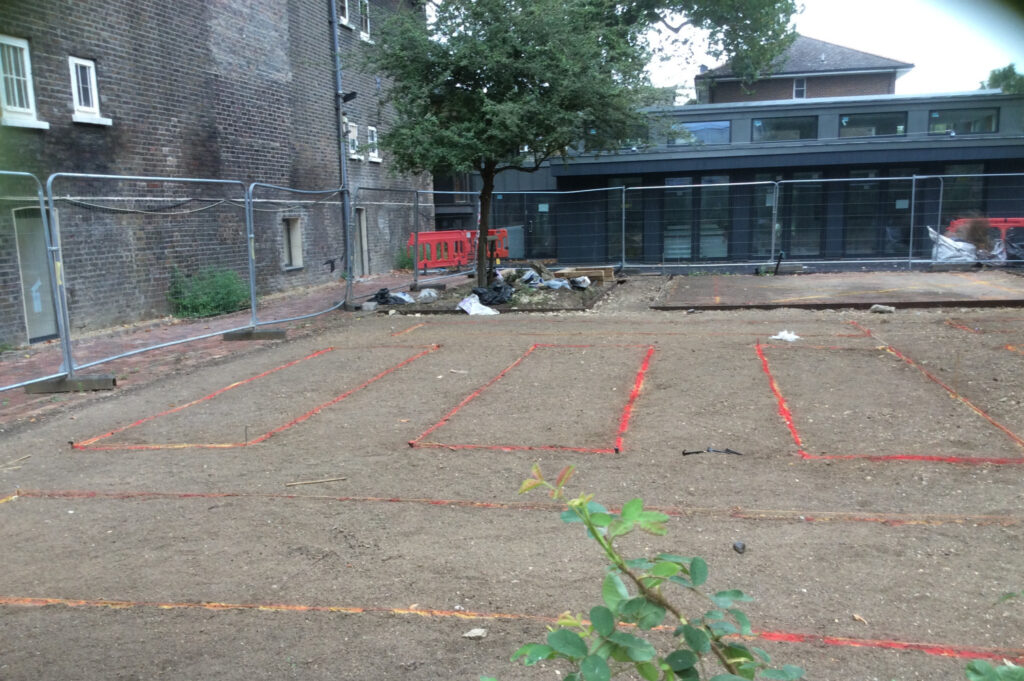
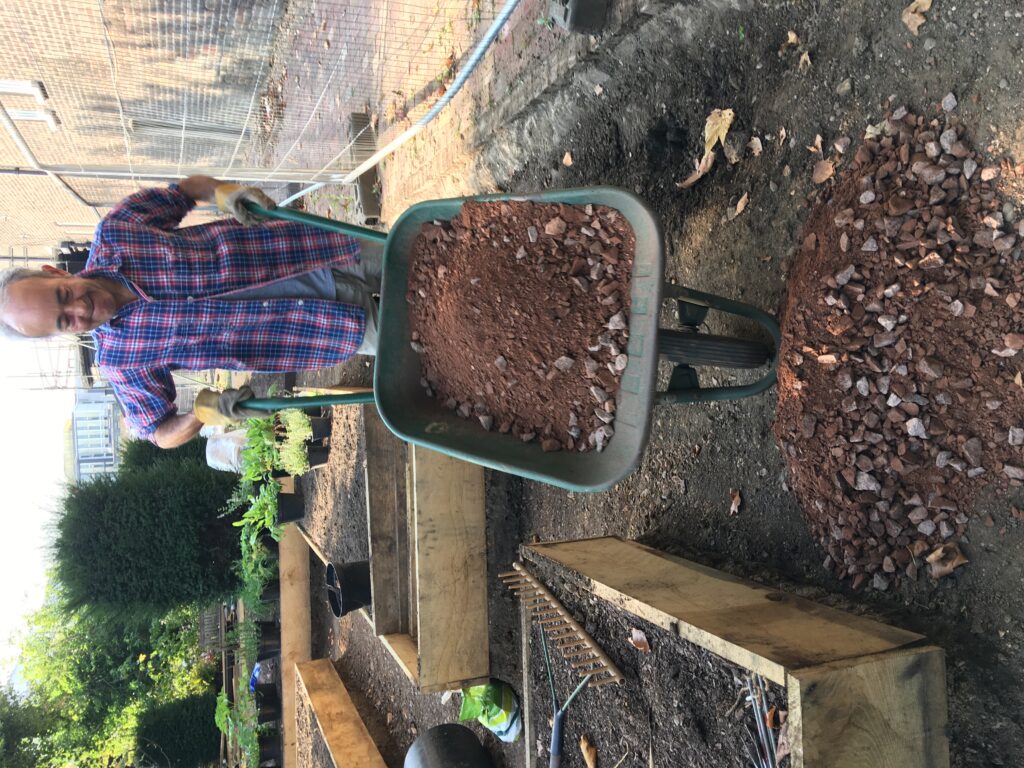
Other display gardens included The Leisurely and Neat Garden of the 1700’s, designed to mimic the symmetry often found within Georgian interiors, and (my particular favourite) the Cottage Garden of the 1900’s. The birth of the Arts & Crafts garden was, in my opinion, the start of the way in which we still garden today. Although various trends, mostly brought to us via prestigious garden shows, have tried to nudge us towards something different at times, it’s still that cottage-muddle style that is wrapped around the average British home. Probably one of our greatest exports, the cottage garden displayed at the museum,has virtually every design element of the style itself: a brick pergola holding up a magnificent wisteria, a well-designed circular brick path, artisan and stately plant supports and an incredibly eclectic collection of cottage-favourite plants.
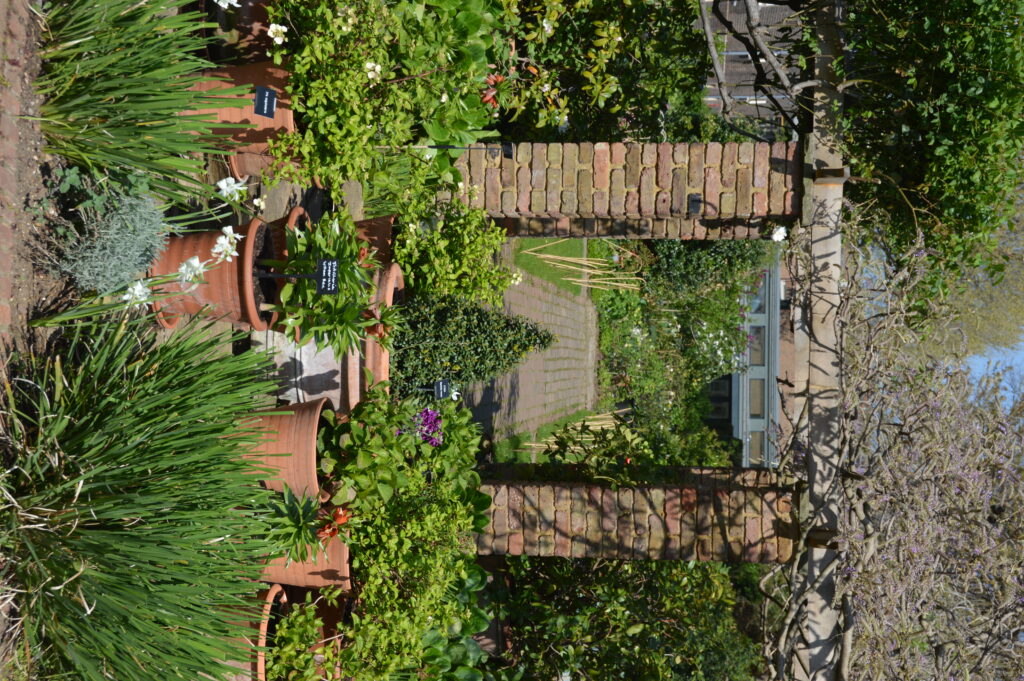
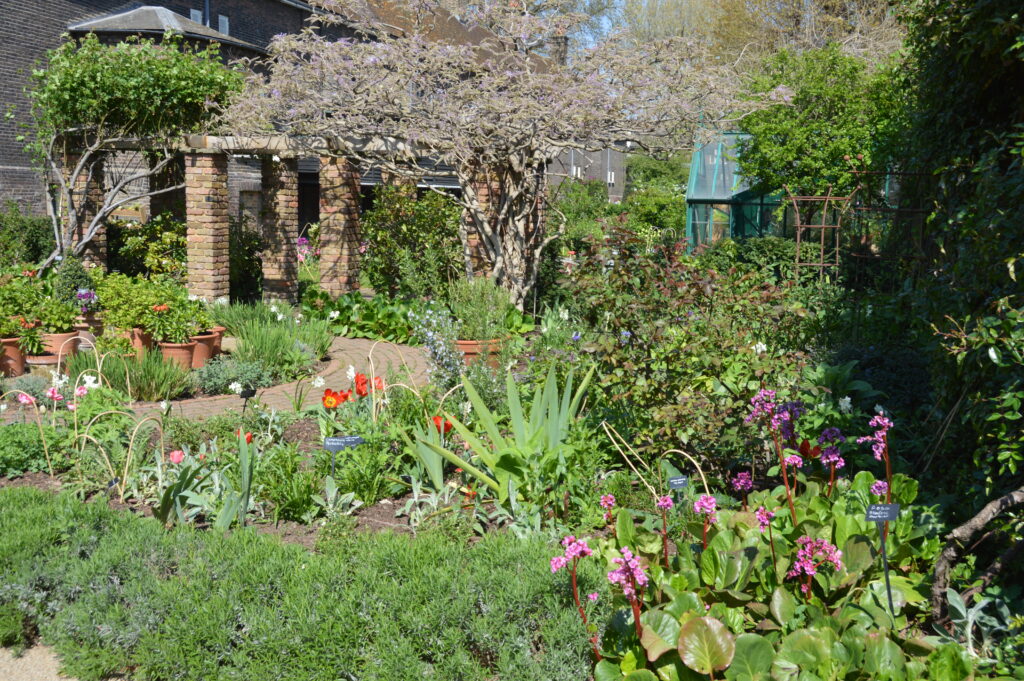 |
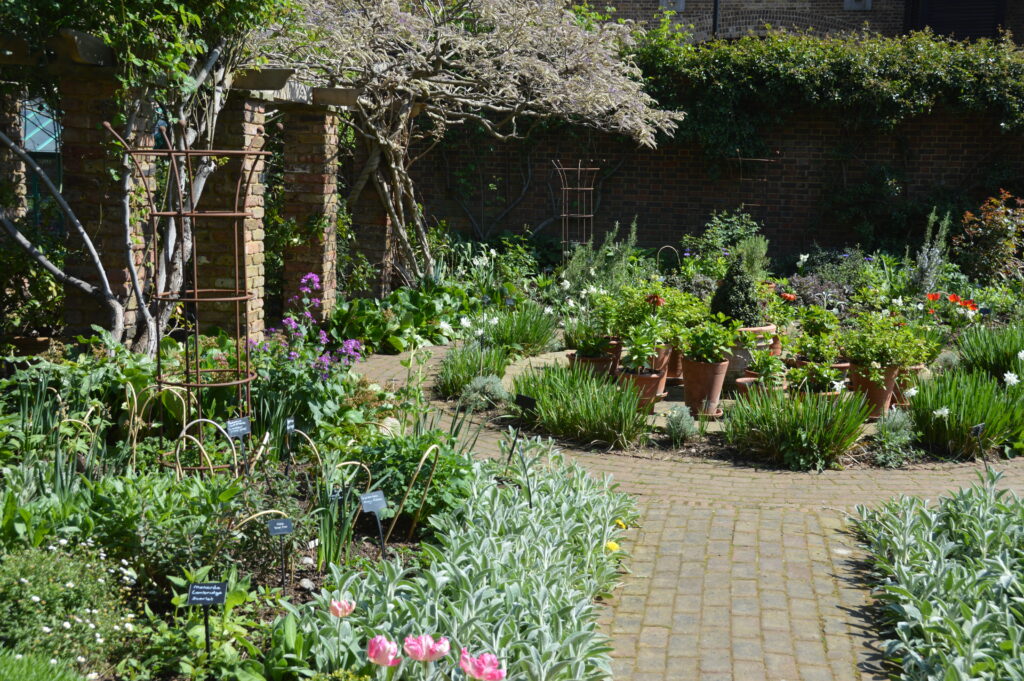 |
Somewhat at eye level, the green roof greets you upon arrival at the museum, and because of the circular nature of the walk, rather cleverly, it’s also the last garden you see when you leave. Designed to show that, despite the constant threat of urban development at ground level, the opportunity to turn our horticultural attentions skyward has opened new and innovative ways of designing green spaces. By emulating landscapes of shallow and dry soils, often exposed to the harshest of conditions, plants that thrive in these conditions (grasses, Irises, sedums, Mediterranean shrubs and alpine plants) were in plentiful supply here. Funnily enough, this is the only garden within the grounds that Heather has had little or no involvement with. Not yet having had her harness training, health and safety protocols forbade her to enter into this garden. From one gardener to another, my advice to Heather would be stay well clear! Gardening already comes with so many hazards: poisonous and prickly plants, pesky pests, plus all the usual risks that come from slips, trips and falls. Any form of garden maintenance that requires hoists and abseiling skills is probably best left to someone else.
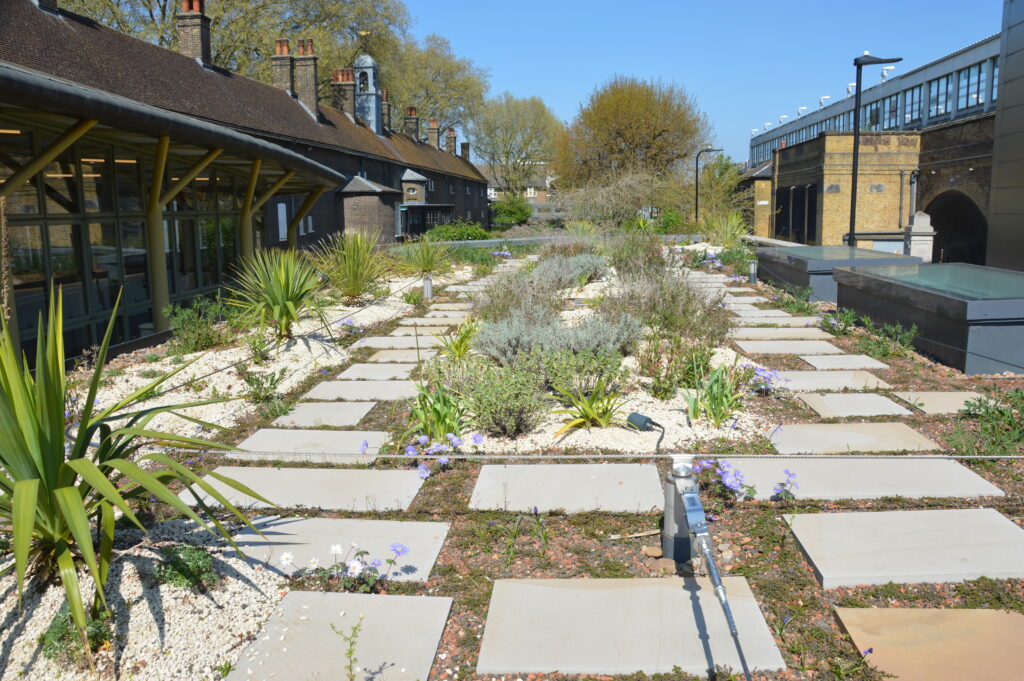
The gardens at The Museum of the Home are well worth a visit. There exists a charming juxtaposition between the historic gardens there, sat against the freshness of the new plantings. In my mind, there is a certain perfection to newly-planted borders, especially with fresh plants or those rejuvenated by recent divisions: a lush healthiness, with plants displaying almost flawless habits.
Heather is a keen, knowledgeable and hard-working gardener. The museum gardens are testament to that! It is through her, and her team’s dedication to plants and gardens, that such an incredible garden has been created there at all, especially given the circumstances of the past couple of years.

Marc Owen
Marc’s Gardens
